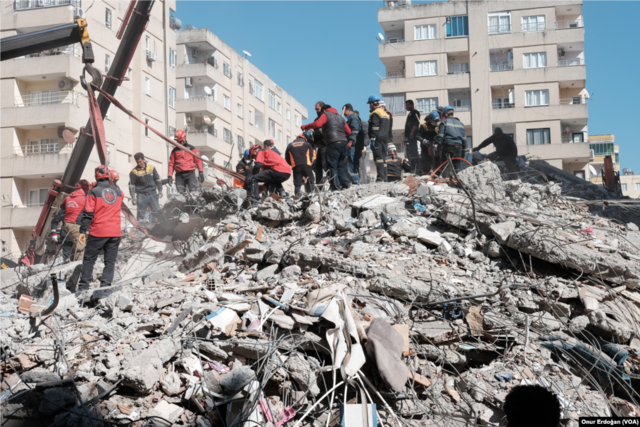Merciless nature hits Turkey and Syria
Earlier this month, it was predicted by the UN that the damage from the deadly earthquakes that hit Turkey and Syria last month will approach $100 billion. To make matters worse, the quake-ravaged regions were inundated by heavy rain and flooding yesterday.
On Feb. 6 at 4:17 a.m. local time, a devastating earthquake with a magnitude of 7.8 and an epicenter at a depth of 7 km hit southeast Turkey near the Syrian border. The aftershocks affected many provinces in Turkey’s Eastern, Southeastern, Central Anatolia and Mediterranean regions
Turkish President Recep Tayyip Erdoğan pointed out that this catastrophe was the largest in the history of the country in almost the last 100 years, the last serious earthquake was in 1939 in Erzincan. The death toll has exceeded that of the 1939 earthquake, making the February disaster the most devastating in Turkey’s modern history.
Thousands of buildings have been destroyed in Turkey and Syria. Scientists compared the force of earthquakes with the explosion of 500 atomic bombs. Thousands of people from different countries are helping Turkey and Syria with the earthquake’s consequences. The Fitch rating agency estimated the damage caused to Turkey by the earthquake at $4 billion.
In northern Syria, there remains the last enclave that is controlled not by the regime of Bashar al-Assad, but by the rebels. After years of civil war, it was already in bad shape and the earthquake made it even worse. According to the latest data, more than five thousand people died there.
Rescuers report that at least five thousand people died in Syria and hundreds of families were under the rubble of collapsed buildings. Before the earthquake residents, women and children, relied on humanitarian aid and a natural disaster brought them to the brink of survival.
Erdoğan said it was impossible to prepare for a catastrophic earthquake. However, some people believe that the authorities reacted to the cataclysm too slowly, and their responses were poorly developed.
The earthquake destroyed many parts of Turkey and international assistance is being provided. More than nine thousand rescuers are involved in search and rescue operations. The capital of Turkey, Ankara, organized an emergency center in the building of the Emergency Situations Department. The Turkish Red Crescent began to supply blood supplies to help the victims.
With each passing day, the chances of finding survivors become less and less. Turkish and Syrian streets are unrecognizable today. The destruction is catastrophic.
Eylull Ozturk, an international student at SLU from Turkey came to Hammond to get a master’s degree in music and performing arts. Even though Ozturk’s hometown is far from the earthquake zone, she shared her concerns about the situation in her country.
“I was constantly watching the news for the first week and my mental state was badly affected, so I don’t watch the news as often now as I used to. I can’t do anything when I’m so far away from my home. I’m still very upset but I hope the survivors get better soon,” Oztrurk said.
Turkish authorities predict restoring the affected areas will take a year. Syria is still facing civil problems with the government, so the restoration of damaged areas is undefined. To help, visit Unicef.
Your donation will support The Lion's Roar student journalists at Southeastern Louisiana University.
In addition, your contribution will allow us to cover our annual website hosting costs.
No gift is too small.

Kate Oborina is a sports communication major with a marketing minor. She joined The Lion’s Roar staff in the fall of 2022. After graduating in May 2025,...







